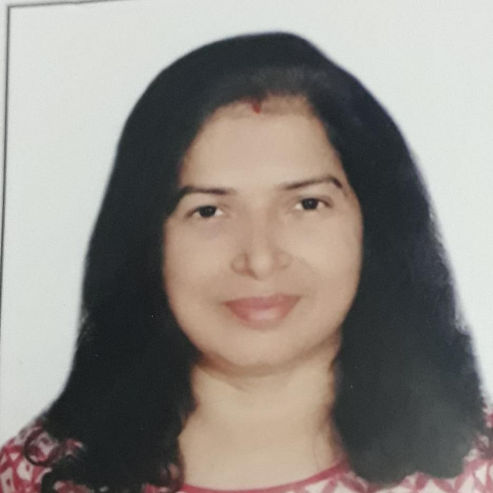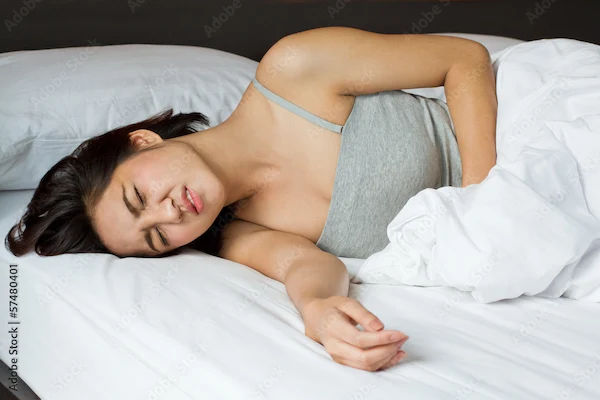How to Reduce Muscle Cramps?
Discover practical tips on how to reduce muscle cramps with hydration, stretching, and nutrition. Learn the causes and best remedies for quick relief!

Written by
Last updated on 3rd Jul, 2025
Muscle cramps are sudden, painful and involuntary contractions of one or more muscles in the body. This mainly occurs in the calves, thighs, arms, hands, feet, abdomen and rib cage. Women often experience such cramps during their periods, which are commonly called menstrual cramps. Usually, this happens due to uterine contractions resulting in tightness or cramping in the pelvic area or the lower back. This condition may last from a few seconds to several minutes.
After the cramp resolves, the muscle may feel tender for some time. General factors that make this happen are dehydration, overuse of muscle, medications, nerve issues, pregnancy, etc. Some common muscle cramps include exercise-associated muscle cramps (EAMC), nocturnal leg cramps, heat cramps, PMS syndrome cramps, postpartum cramps, menopause-related cramps, etc.
Common Triggers of Muscle Cramps
Various reasons can trigger muscle cramps. Some of them are -
Overexertion - Sometimes, the muscle gets fatigued due to prolonged physical activities or excessive workouts without proper stretching or warm-up. This leads to involuntary contractions of the muscles, resulting in cramps.
Dehydration - Proper electrolyte balance is needed for the muscles to function normally. Sometimes, this balance gets disrupted due to inadequate water intake or profuse sweating due to extreme heat. This increases the possibility of muscle cramps.
Nutritional Deficiencies - The level of nutrients like potassium, magnesium and calcium should be maintained for proper functioning of the muscles. If these minerals are inadequate, muscle contractions and nerve transmissions are affected, resulting in painful cramps.
Medical Conditions and Medications - Certain medical conditions like diabetes, kidney disease, thyroid disorder, etc., and medications such as those needed for high blood pressure, diuretics, etc., can cause muscle cramps. These primarily affect the nerve function and fluid balance of the body.
Menstrual cycle and hormonal changes - In women, certain hormone levels fluctuate during menstruation, menopause or pregnancy. This results in electrolyte imbalance, fluid retention, muscle relaxation, and cramps.
Age - As people get older, the muscles start losing their elasticity due to the poor functioning of the nerves. Such muscles are prone to cramps when there is physical exertion or a long inactive phase.
Nutritional Interventions
Nutritional interventions are essential to prevent muscle cramps, as imbalances in electrolytes such as potassium, magnesium, sodium, and calcium often cause this condition. These electrolytes maintain the electrical charge across the cell membranes needed for proper muscle contraction and relaxation. They also balance the fluid level inside and outside the cells. Nerves communicate with the muscles and trigger contractions. For this, the nerves should be able to transmit electrical signals properly, which is possible only for sodium and potassium. Magnesium helps the muscles to relax after contraction.
So, maintaining a diet rich in potassium, magnesium, calcium, and sodium is necessary. Some foods rich in these nutrients are -
Potassium - Bananas, white beans, avocado, potatoes, mushrooms.
Sodium - Cheese, dry roasted sunflower seeds, dill pickles.
Magnesium - Soy products, nuts, whole grains.
Calcium - Milk, cheese, tofu, yoghurt.
Hydration Strategies
The fluid and electrolyte balance of the body can only be maintained with proper hydration, which can essentially prevent muscle cramps. So, adequate fluid intake is essential for good health. It stops overheating of the body and improves blood circulation, thus preventing the muscles from cramping. This is necessary even for women undergoing menopause, pregnancy or menstruation, as it enhances muscle recovery and reduces fatigue. It enables people, especially athletes, to perform their best during any physical activity.
Some hydration tips for athletes are -
Hydrating should begin several hours before exercising with continuous sipping of water at regular intervals throughout the workout.
To prevent stomach discomfort, small sips are preferred instead of large gulps.
Sports drinks containing electrolytes should be considered to hold back energy for a prolonged period.
Urine colour must be monitored. Pale yellow means good hydration, whereas darker urine suggests dehydration.
The diet should contain fruits and vegetables with high water content, like cucumber, watermelon, etc.
Exercise And Stretching Techniques
Regular exercise and stretching are needed to maintain good muscle health and prevent cramps. They help improve muscle flexibility and elasticity, blood flow and circulation, reduce muscle tension and tightness, prevent overuse injuries, and reduce muscle soreness. Some stretching routines to avoid muscle cramps are -
Calf stretch
Hamstring stretch
Quadriceps stretch
Toe curls
Stretching should be done multiple times a day, but slowly and gently. Ideal times for this are pre and post workout and before bed.
The ideal warm-up practices are -
Light cardio like walking or jogging.
Dynamic stretches like arm circles, leg swings, etc.
Muscle activation exercises include arm and leg pulses, lunges, or squats with a light weight.
The ideal cool-down practices are -
Gradually and slowly, the intensity is reduced, like changing from running to walking.
Practising static stretches, like holding each stretch for 30 seconds or more, depending on the body’s capacity.
Constantly taking deep breaths for relaxation.
For both warm-up and cool-down, the intensity should depend on the capacity of the body. Muscles should not be overstrained.
Alternative Therapies
Alternative therapies can do wonders in preventing muscle cramps.
Massage therapy: Various massage techniques, like stroking, tapping, kneading, applying controlled pressure, are used on different body parts, which subsequently relieve pain and promote muscle relaxation. This helps women to get relief from cramps that occur during menstruation, pregnancy, or menopause. Postpartum recovery is also possible through massage.
Acupuncture: In this, very fine needles are inserted into specific points of the body called acupoints. This helps healing of the muscle cramp points, thus relieving pain. It stimulates the nervous system, promoting the release of endorphins (natural pain-relieving chemicals), and some other neurochemicals reduce the cramps followed by pain relief.
Acupressure: It is similar to acupuncture, but manual pressure is applied to the acupoints instead of needles. Fingers, thumbs, palms and elbows are used for this technique. It relieves muscle tension, improves blood circulation, stimulates energy flow, and relieves pain by resolving the muscle cramps.
Again, both acupuncture and acupressure techniques are beneficial for childbearing age, as well as menopausal women suffering from painful cramps.
Lifestyle Modifications
In today’s strenuous day-to-day life, it is apparent that people suffer from health complaints. Some modifications in lifestyle are needed to avoid further complications along with muscle cramps.
Regular exercise helps to strengthen muscles and improves body flexibility and blood circulation, which cumulatively reduces the risk of muscle cramps. Regular walking, jogging, cycling, yoga, or pilates are needed. However, proper warm-up and cool-down should be done after exercising so the muscles do not get stiff.
Inadequate sleep also predominantly affects health. Consistency in the sleep schedule is needed for the body to function normally. This also helps the muscles to recover, thus preventing cramps. Deep
sleep regenerates muscle tissue, leading to their relaxation. So, it is essential to create an environment that promotes deep sleep.
Using the phone or watching television before sleeping should be avoided as it affects sleep predominantly. Even the sleeping position matters. It should be comfortable and cosy. Only then can cramps be avoided.
When to Seek Medical Attention
At times, the condition becomes serious when the cramps are severe and persistent. This indicates an underlying health problem calling for the intervention of a doctor. These include –
If the cramps are associated with redness, warmth or swelling, internal clot formation, inflammation or infection can occur.
In case a cramp develops after a fall or injury, a muscle tear, fracture or sprain can occur.
Cramps may also happen during pregnancy, which indicates deep vein thrombosis (DVT) or preeclampsia.
Whatever the indication, immediate medical attention should be sought if the cramp doesn’t resolve quickly.
Conclusion
Generally, muscle cramps are a common problem and are resolved naturally with the right kind of approach. Usually, the factors that cause such cramps are dehydration, poor blood circulation, electrolyte imbalance, inactivity, muscle fatigue, etc. Stay hydrated, maintain a proper diet, and incorporate regular exercise can prevent these. Even good sleep patterns and stress management techniques can be of help. However, in case of severity, especially for pregnant or menopausal women and people suffering from some chronic disease, a doctor’s advice becomes essential. However, a healthy and holistic approach to life is necessary to avoid complications and live happily.
Consult Top Gynaecologists
Consult Top Gynaecologists

Dr. Mona Yadav
Obstetrician and Gynaecologist
19 Years • MBBS, MD (Obstetrics & Gynaecology)
Dombivli
Nulife multispeciality, Dombivli

Dr. Sridevi Matta
Obstetrician and Gynaecologist
28 Years • MS ( OBG ), DGO, DNB Obstetrics & Gynaecology
Chinagadila
Apollo Hospitals Health City Unit, Chinagadila
(175+ Patients)

Dr. Parul Sharma
Obstetrician and Gynaecologist
8 Years • MBBS, MS (Obstetrics & Gynaecology)
New Delhi
THE DOCTORS NESST, New Delhi

Dr. Asha Rani Singh
Obstetrician and Gynaecologist
24 Years • MBBS DGO
Delhi
Dr Asha Rani Singh Clinic, Delhi
Dr. K Anusha
Obstetrician and Gynaecologist
4 Years • MBBS, DGO
Yemmiganur
SRINIVASAA HOSPITAL, Yemmiganur

.webp)
